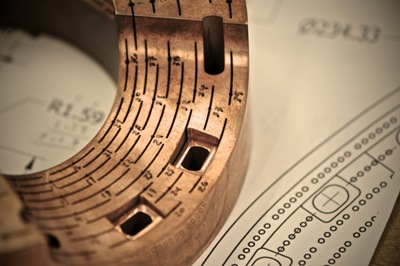At Florida State University’s National High Magnetic Field Laboratory, a tailor-made split magnet system has been built to conduct advanced scientific research.
The new split magnet system has 25 tesla of magnetic field intensity, an increase of 43% when compared to an earlier 17.5 tesla record achieved in 1991 by this magnet system. It also has 1,500 times more center space, offering the options to do numerous experiments. The National Science Foundation has funded the new magnet.
 Interior parts for the split coil magnet
Interior parts for the split coil magnet
The research team led by Jack Toth, a Magnet Science and Technology staff at the National High Magnetic Field Laboratory, designed the magnet by modifying the structural restrictions of resistive magnets.
The new split magnet has four huge elliptical ports, which allow the researchers a direct access to the central experimental space of the magnet, while retaining a high magnetic field. The research team built the four ports at the magnet coil’s center, which had intensified magnetic fields. Engineering a magnet system with ports that can tolerate heavy power load and intensified magnetic fields was not possible before. Toth’s research team made this possible by cutting huge holes in the magnet’s center to access the bore, while retaining a high magnetic field.
All these activities have to be carried out when the magnet’s two halves are pulled by 500 tons of pressure, while simultaneously allowing 3,500 gallons of water and 160,000 A of electrical current to pass via the mid-plane.
Optics scientists in biology, physics and chemistry are interested in utilizing the split magnet for their research work, while other researchers believe that the magnet could also be used in semiconductor and nanoscience research. A Kent State University researcher is already using the magnet for his research work.